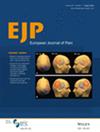Attentional Focus but Not Distraction or Expectations Influence Conditioned Pain Modulation in Healthy Adults
Abstract
Background
Despite extensive research on conditioned pain modulation (CPM), uncertainties remain regarding the role of cognitive mechanisms, such as attentional focus, distraction, and intrinsic a priori expectations, and the most optimal CPM protocol design (parallel vs. sequential). This study examined whether these cognitive factors influence CPM efficacy, and whether CPM magnitude differs between a parallel and sequential protocol.
Methods
Seventy-two healthy adults participated in this randomised cross-over study undergoing CPM evaluation, that is, pain pressure threshold assessment (=test stimulus) in response to hot water immersion (=conditioning stimulus (CS)) during four experimental protocols, that is, a neutral parallel protocol, a neutral sequential protocol, a sequential protocol with attentional focus on the CS-induced pain intensity, and a sequential protocol with attentional distraction from the CS. Pain expectations were recorded before each protocol.
Results
Focusing attention on the CS during CPM assessment resulted in smaller CPM magnitudes compared to no attentional manipulation or distracting from the CS. Distracting from the CS did not affect CPM magnitude compared to no attentional manipulation, nor did a priori expectations. Although CPM magnitudes were not statistically different between the parallel and sequential CPM protocol, a sequential protocol provides higher mean magnitudes and responder rates.
Conclusions
Since attentional focus on the CS reduces CPM efficacy, it is recommended to not rate the CS pain intensity during CS application to prevent a reduction of the inhibitory effect. Furthermore, a sequential protocol is recommended over a parallel protocol as a ‘cleaner’ representation of pain modulation free of attentional sources of biases.
Significance Statement
Conditioned pain modulation (CPM) is an important biomarker reflecting pain processing, however, there is a high variability in CPM response, making it important to gain insight into the influencing factors and mechanisms of CPM. The results of this study suggest that attentional focus on the conditioning stimulus influences CPM magnitude, whereas a distraction task and intrinsic a priori expectations do not. In both therapeutic and preventive approaches, it is of great interest for clinicians to positively address factors influencing CPM.
Trial Registration
ClinicalTrials.gov identifier: NCT05161286

 求助内容:
求助内容: 应助结果提醒方式:
应助结果提醒方式:


